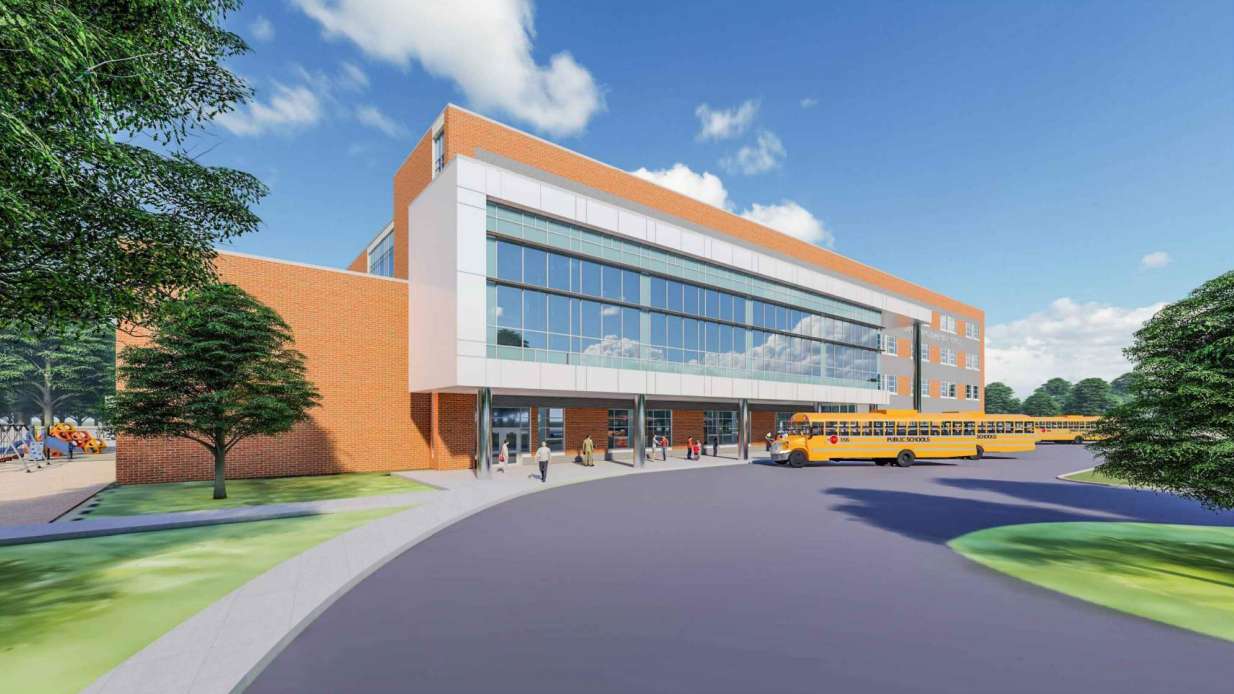
Planning is well underway for a new elementary school in Dunn Loring, but some McLean residents argue that Fairfax County Public Schools still hasn’t explained why the project should be prioritized over other needs.
As part of a resolution on the proposed county and FCPS budgets, the McLean Citizens Association’s board of directors urged the Fairfax County School Board last Wednesday (April 3) to “refrain from constructing” the school if officials can’t “provide adequate data” justifying it.
“What they are expecting to do is spend $80 million-ish, and they do not have any data to support the construction of that,” Louise Epstein, who chairs MCA’s budget and taxation committee, said.
Partially funded by bond money once intended for a new school in Oakton, the proposed four-story, 125,905-square-foot building will repurpose the Dunn Loring Administrative Center at 2334 Gallows Road. In addition to relieving crowding at schools in the Dunn Loring, Tysons and Falls Church areas, the project will add new playground facilities to the 10-acre site and move the vehicle access points from Gallows Road to Idylwood Road, according to a rezoning application under review by the county.
While crowding was an issue at Shrevewood Elementary School for years, the school in Idylwood is now operating at 95% capacity, and FCPS projects that will drop to 86% in the 2028-2029 school year, according to its latest capital improvement program (CIP), which was approved by the school board on Feb. 8.
Stenwood Elementary School, which is in Dunn Loring, is utilizing 97% of its capacity right now and is projected to reach 98% in 2028-2029.
In its resolution, MCA acknowledged that FCPS will face “upward pressures” on enrollment from new residential development, including in Merrifield and Tysons, but it says the CIP and its own “independent analysis” based on data provided by FCPS don’t show any near-term impacts on elementary schools in Dunn Loring.
“The School Board’s inclusion of Dunn Loring project in the FY 2025 Advertised Budget is not supported by FCPS 5-year enrollment projections,” MCA’s resolution says, “since no elementary school near Dunn Loring has an existing or projected ‘capacity deficit,’ and elementary schools in that vicinity are projected to have an aggregate ‘capacity surplus’ of 789 seats in 2028-29.”
Per the CIP, FCPS is forecasting capacity deficits at 20 elementary schools by the 2028-2029 school year, including at Spring Hill, Franklin Sherman and Kent Gardens. Boundary changes in McLean will take effect starting this fall. Read More
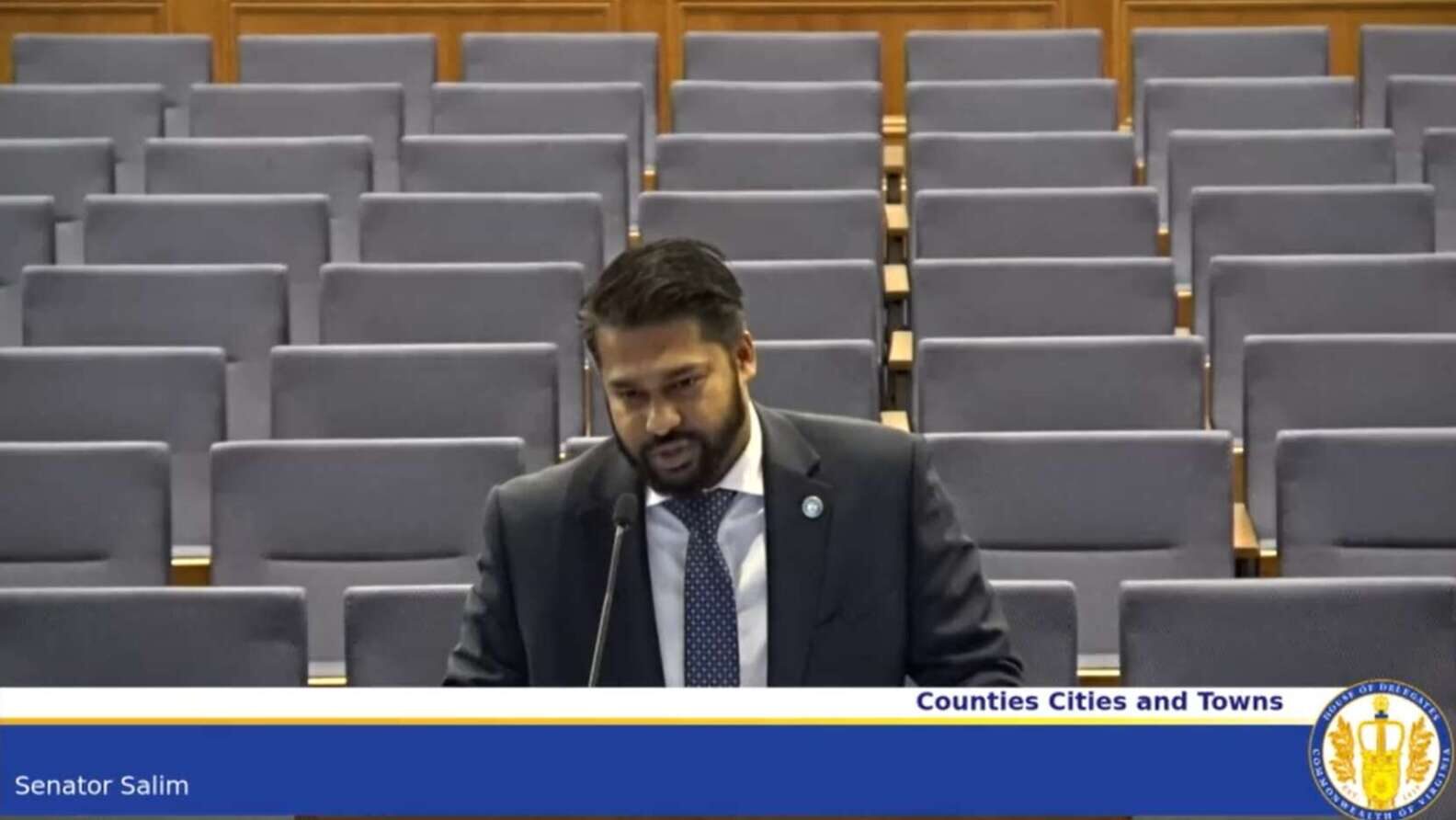
Final consideration of state Sen. Saddam Salim’s (D-37) proposal to expand the availability of accessory housing units in Virginia will wait until next year.
A Virginia House of Delegates committee voted on Feb. 23 to table Senate Bill 304, until 2025, suggesting that the delay would give Salim and other legislators more time to refine the bill and collect data on existing local policies allowing accessory dwelling units (ADUs), which are known in Fairfax County as accessory living units (ALUs).
In his first term representing the 37th Senate District, which includes Tysons, Vienna, Oakton, Merrifield and the cities of Fairfax and Falls Church, Salim proposed requiring localities to allow ALUs in residential districts “by right,” meaning the property owner wouldn’t need a special permit that often comes with added fees and public hearings.
Though the bill passed the Senate 22-18 on Feb. 9, it was still being revised up until the House Counties, Cities and Towns Committee’s meeting on Feb. 23. The committee didn’t hear public testimony, but its chair, Del. Candi Mundon King (D-23), noted that seven people had signed up to oppose the bill and three to support it, on top of “extensive” feedback at a subcommittee meeting on Feb. 22.
“There is no concern about accessory dwelling units in concept. I think you saw unanimous support,” Del. Briana Sewell (D-25), who chaired the subcommittee, said. “The issue is fine-tuning the language, and the fact that you even brought forth an amendment today showcases that the work has not been complete.”
Also sometimes known as “granny flats,” ADUs or ALUs are independent, secondary residential units located on the same lot as a single-family house. They can either be attached to the primary dwelling or standalone structures, but as defined by Salim’s bill, they have their own living, bathroom and kitchen space.
Though he doesn’t seem them as a solution to local affordable housing needs, Salim says accessory units are still a useful option for residents who might otherwise be priced out of their neighborhood, including seniors and college students.
“Numerous constituents, including teachers, firefighters, nurses, and other essential workers, have expressed concerns about being priced out of our community,” he said in a statement to FFXnow. “Among the primary impediments to ADUs are local requirements for Special-Use Permits, which substantially inflate costs and delay construction timelines, rendering them financially unfeasible in many cases.”
When talking before the House committee, he recalled how he and his family had to live in other people’s basements after they immigrated to the U.S. from Bangladesh in the early 2000s.
“ADUs would’ve been something that would’ve helped us temporarily, whether it’s a room in someone’s house or a configuration of a bathroom, a kitchen and a bedroom that comes together,” he said. “…Living in those basements allowed us to apply for affordable housing. That took about three and a half years.” Read More
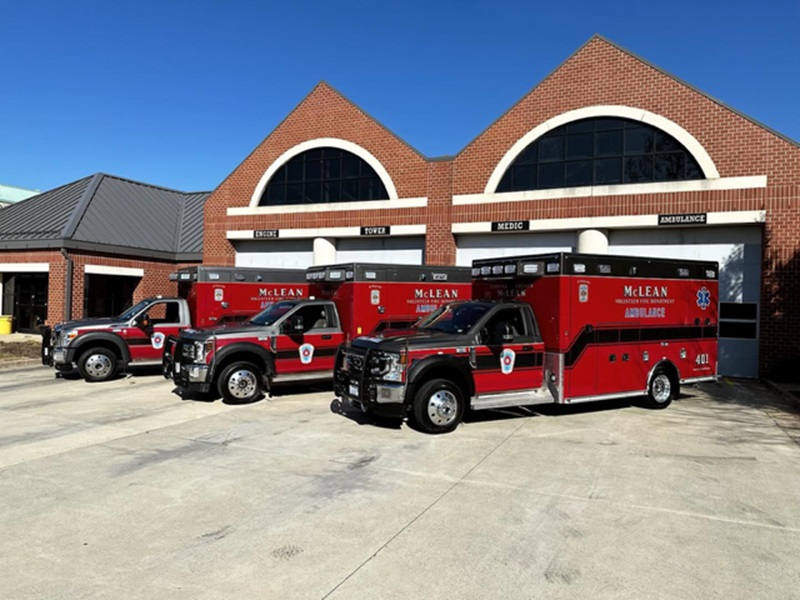
For the first time since it was established in 1921, the McLean Volunteer Fire Department (MVFD) has expanded its vehicle fleet to three ambulances.
The newest ambulance began operating out of the Fairfax County Fire and Rescue Department’s Station 1 (1455 Laughlin Avenue) on Feb. 21, but it will get an official, public reveal this Saturday (March 2) at the annual “I Love McLean” celebration.
Sponsored by the McLean Citizens Association (MCA), this year’s “I Love McLean” festivities will also include musical performances, light refreshments, and arts and crafts. The event will take place at the McLean Community Center (1234 Ingleside Avenue) from 1-4:30 p.m., though the ambulance will only be on site until 2:30 p.m.
MVFD officials initially planned to invite community members to see the ambulance at the station before realizing that they already had a perfect opportunity for a showcase on their calendar.
“The ‘I Love McLean’ event is a big deal, and there’s lots of folks,” MVFD President Patricia Moynihan said. “So, we essentially just piggybacked on it and thought, ‘Well, we’re going to be there anyway.’ Let’s just take it out of service and let folks know that we’re going to be there.”
According to Moynihan, having a third ambulance will boost MVFD’s capacity to respond to emergencies not just in McLean, but anywhere in Fairfax County. It will also provide more flexibility for training personnel and continuing service even when a vehicle is taken out of rotation for repairs or regular maintenance.
She noted that the capacity expansion doesn’t require additional staff, though more volunteers are always welcome.
“We’re super lucky in McLean in that we have a full-time career staff, and then we have a total of 80 volunteers, and we have the largest number of paramedic volunteers…of the county volunteer stations,” Moynihan said. “…We’re always looking for new folks, trying to increase our ranks and our capabilities, but we can staff all three [ambulances] between the career and the volunteer folks at this point.”
Thanks to a $38,496 grant from the McLean Community Foundation, the new V011-2022 Road Rescue Ultra Medic has a Stryker Power-LOAD system that mechanically raises and lowers the cot used to load patients. The technology makes the process safer for both patients and first responders, who can develop knee and back issues from moving and lifting people, Moynihan says.
One of the department’s older ambulances — a 2018 Road Rescue Ultra Medic — also features a power-loading system, but the oldest one, which dates back to 2015, still has a model cot that Moynihan hopes to get replaced.
Overall, the ambulance cost $307,000, an amount partly covered by both large and small community donations. The biggest contribution came from the Woman’s Club of McLean, which raised $13,000 with a Kitchen and Garden Tour that it organized last April.
MVFD also got the Fairfax County Board of Supervisors’ approval to pursue a loan of up to $250,000.
Even as they celebrate their latest vehicle acquisition, MVFD leaders are working to raise funds for the next one: a new fire engine that has already been ordered but isn’t expected to arrive until at least 2026.
Moynihan says the cost of that apparatus has ballooned to over $1 million — twice as much as an estimate shared last summer. MVFD will be responsible for 51% of those costs, and Fairfax County will pay for the rest under an agreement similar to the one that enabled the department to buy its existing engine.
The department’s current plan is to keep both engines and use the new one as the main call responder, freeing up the older engine for community events. However, Moynihan cautioned that those plans could change by the time the new engine is available.
“We will have a second secondary engine that we can use, or if there’s something big that’s going on…like the explosion in Sterling in Loudoun County, we would then have an extra engine that we could lend to whoever needed it,” she said.

(Updated at 4:20 p.m.) A state-level push to ease restrictions on accessory residential units could put Fairfax County at odds with one of its own senators.
The proposed Senate Bill 304 from state Sen. Saddam Salim (D-37) would require localities to permit accessory dwelling units (ADUs) in residential districts and prohibit them from setting certain conditions, including the provision of dedicated parking for the unit.
Fresh off a primary upset of longtime senator Chap Petersen and a comfortable general election victory over Republican Ken Reid, Salim says he’s “proud” to sponsor the bill in his first term representing the 37th Senate District, which includes Tysons, Vienna, Merrifield, Oakton and the cities of Fairfax and Falls Church.
The legislation was crafted “to help Virginians with the skyrocketing cost of housing,” he told FFXnow in a statement. Filed on Jan. 9, the bill was referred to the Senate’s committee on local government, which met this morning (Monday) but didn’t list this on its docket.
“I have heard from so many Virginians who are being priced out of our communities due to a shortage of diverse and creative housing options,” Salim said. “This bill promotes housing affordability and addresses the growing housing crisis by taking action to increase our housing stock. ADUs provide additional living spaces, accommodating diverse housing needs without the need for extensive new construction.”
Defining an ADU as an independent, secondary unit on a single-family lot with its own living, bathroom and kitchen space, the bill would bar localities from requiring a special permit for the units, which must instead be permitted in residential districts as an accessory use. In Fairfax County, that means they would be generally permitted with only an administrative review.
Localities could impose a permit fee of up to $100 and require a one-ADU-per-lot limit, a rental period of at least 30 days, replacement of the main dwelling’s parking if it’s eliminated by the accessory unit, a maximum square footage of 75% of the main dwelling, and compliance with building codes, stormwater standards and other zoning rules.
However, localities wouldn’t be allowed to require dedicated parking for the ADU, lot sizes or setbacks that exceed the ones for the primary residence, a relationship or “affinity” between the primary and accessory dwelling occupants, owner occupancy of either unit, or “redundant water, sewer, or septic capacity for the ADU.”
The prohibitions on special permits and parking and ownership occupancy requirements clash with the regulations that Fairfax County adopted first in 2021 and, again, in May 2023 as part of its Zoning Ordinance Modernization Project, or zMOD.
With its first comprehensive zoning code update since 1978, the county allowed accessory living units (ALUs) — a renaming of ADUs to avoid confusion with affordable dwelling units — via administrative permit if they’re located in a basement or otherwise fully contained by the main dwelling without any exterior changes.
To be eligible for an administrative permit, rather than a special permit, which comes with its own standards, ALUs must meet size limits, have at most two occupants and two bedrooms, and have at least one parking space in addition to what’s required for the main residence. The county also requires that the property owner live in the primary or accessory dwelling.
Even with those restrictions, the addition of an administrative option expanded the viability of ALUs in the county, which previously limited them to residents 55 and older and people with disabilities. Fairfax County Board of Supervisors Jeff McKay has compared the changes to the end of single-family-only zoning in Arlington and Alexandria in their potential to address the region’s constrained housing supply. Read More
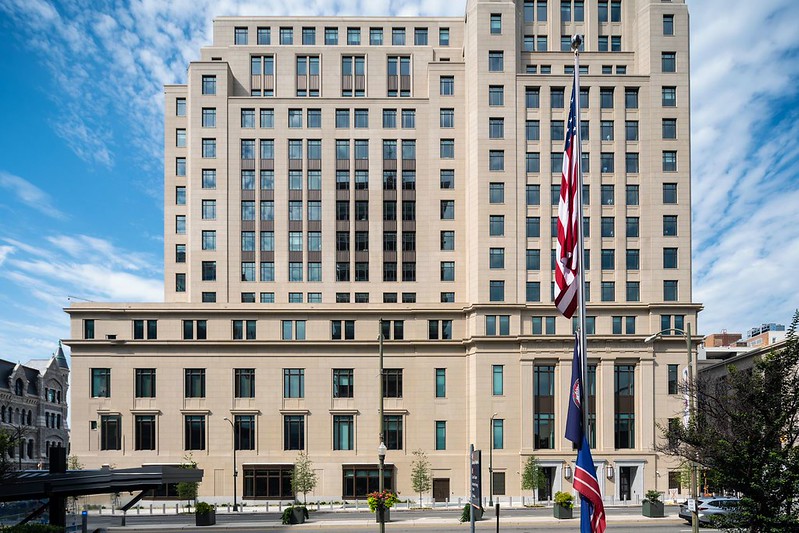
Opposition continues to mount against the possibility of a casino in Fairfax County.
With the Virginia General Assembly kicking off its 2024 legislative session tomorrow, the McLean Citizens Association has come out against a bill expected to be filed soon by state Sen. Dave Marsden, who has proposed adding Fairfax County to the list of localities where a gaming casino could be permitted.
Described as an “unofficial town council” for residents of the greater McLean area, the MCA’s board of directors voted last week to send a letter to the county’s delegates and state senators expressing its opposition to the prospective bill, a stance also adopted by Reston Association.
“Many of our members and residents have contacted MCA Board members to express their opposition to allowing casinos to be operated in Fairfax County,” MCA President Linda Walsh said in a statement. “MCA is watching this closely.”
Sent on Monday (Jan. 8), the letter acknowledges that the MCA can’t comment in detail on the legislation, since it hasn’t been made public yet.
However, developer Comstock is reportedly seeking to build a casino near the Wiehle Metro station in Reston. Marsden has argued that Tysons would be a better fit, suggesting the facility could be part of an entertainment district with a performing arts venue and a conference center.
Citing a need for the county to diversify its commercial tax base with the office market still struggling to recover from the pandemic, Marsden submitted legislation last year that would’ve opened the door for a casino in Fairfax County along Metro’s Silver Line. The bill was quickly withdrawn.
Though he doesn’t represent Reston or Tysons, Marsden serves on the senate’s finance and appropriations committee, which handles budget and tax-related legislation. It will be chaired this year by Sen. L. Louise Lucas (D-18).
Marsden told FFXnow on Dec. 28 that his new bill will be filed within “the next two weeks.” The filing deadline is Jan. 19.
Even if the legislation passes through the General Assembly and gets signed into law by Gov. Glenn Youngkin, a voter referendum would still be required to officially authorize a casino in Fairfax County. The establishments have only been approved in five Virginia cities.
MCA’s full letter to the county’s General Assembly delegation is below:
Dear Fairfax County Delegation to the State Senate and House of Delegates:
The McLean Citizens Association (“MCA”) has recently become aware of intentions to introduce legislation in the upcoming session of the Virginia Assembly that would amend the Code of Virginia, Title 58.1 Chapter 41 in a way that would allow a gaming casino to operate in Fairfax County. Among other suggested sites, proponents of this effort have named Tysons, the majority of which lies within the MCA’s general membership area, as a potential location for a casino.
Since the bill has not yet been submitted in the Assembly, MCA is not able to comment on it in detail at this time. However, many members of MCA are concerned about this initiative. Accordingly, the MCA Board has voted to express its opposition to legislation that would allow a gaming casino in Fairfax County.
Regards,
Linda Walsh
MCA President
Photo via Virginia House of Delegates/Flickr

A pair of upcoming candidate forums will give McLean and Vienna residents a chance to get to know the people aspiring to represent them.
First up, the McLean Citizens Association is hosting a debate at 7:30 p.m. today (Thursday) between candidates for the Dranesville District’s supervisor and school board seats.
Former Dranesville District Democratic Committee chair Jimmy Bierman, who won his party’s nomination in a June primary, and Fairfax County Republican Committee first vice chair Puneet Ahluwalia are seeking to succeed Supervisor John Foust, who’s retiring after 16 years in office.
With incumbent Elaine Tholen not seeking reelection, the school board race features Robyn Lady — a retired Fairfax County Public Schools counselor endorsed by the Fairfax County Democratic Committee — and Paul Bartkowski, a Republican-endorsed lawyer who says he represented plaintiffs in a legal challenge to FCPS’ mask requirements during the pandemic.
The MCA will host the debate in person at the McLean Community Center (1234 Ingleside Avenue), but it will also be live-streamed via Zoom.
Vienna Town Council candidates forum coming
The Northeast Vienna Citizens Association (NEVCA) will host a “Meet the Candidates” event at the Vienna Community Center (120 Cherry Street) at 7:30 p.m. tomorrow (Friday).
While Mayor Linda Colbert is unopposed in her bid for reelection, the Vienna Town Council race has seven candidates vying for six seats:
- Sandra Allen, a mother and volunteer who previously ran for school board
- Chuck Anderson (incumbent)
- Roy James Baldwin, a lawyer and Vienna Board of Architectural Review chairman
- Ray Brill (incumbent)
- Shelley Mountjoy, a former community college professor and web developer
- Jessica Ramakis, a Vienna Planning Commission member
- Howard Springsteen (incumbent)
Beth Eachus, chair of Vienna’s Transportation Safety Commission, is also campaigning for a council seat as a write-in candidate, the Gazette Leader reported. However, the NEVCA forum will focus on candidates officially registered with the Virginia Department of Elections.
More information about the candidates can be found in Vienna’s September newsletter.
According to its event announcement, NEVCA has hosted candidate forums for 20 years, but this will be its first in-person event since 2019. The volunteer organization conducted forums virtually during the pandemic.
“The objective has been to inform and educate all residents of the Town of Vienna with an interactive and conversational opportunity to hear from the candidates for the Town Council,” said NEVCA Vice President Doug Francis, who will moderate the forum.
According to Francis, the event will be recorded by the Town of Vienna Public Information Office, which will share the video on the town’s media platforms.
Colbert and the town council candidates previously appeared at a Sept. 19 forum organized by the local National Active and Retired Federal Employees Association chapter, according to the Gazette Leader.
This will be the Town of Vienna’s first November election after the Virginia General Assembly adopted a law in 2021 ending all local May elections, starting on Jan. 1, 2022. In a change from the previous, staggered approach, all town council seats will now always be up for election at the same time. Members will continue to serve two-year terms.
Early voting is currently underway for the 2023 general election, which will be held on Nov. 7 and determine Fairfax County’s next Board of Supervisors, school board and state legislators, among other races.

The McLean Citizens Association (MCA) wants Fairfax County to reconsider its embrace of synthetic turf for athletic fields, as a decision nears on whether to replace the grass baseball diamond at Linway Terrace Park (6246 Linway Terrace).
The organization, which represents residents of the greater McLean area, has called for a review of the county’s practices regarding synthetic turf, particularly the potential health and environmental risks posed by crumb rubber — bits of recycled tire commonly used for artificial fields.
Approved by the MCA board of directors at a meeting last Wednesday (Feb. 1), the resolution builds off a February 2018 request that the county test field drainage for possible water contamination and create a citizen task force to explore the issue.
“Looking at the issue anew this year, we learned that concerns about the environmental and health effects related to synthetic turf fields continue to be significant and in some ways have grown,” Barbara Ryan, who chairs MCA’s environmental committee, said.
The Fairfax County Park Authority announced in December that McLean Little League had offered to help fund a conversion of Linway Terrace Park’s baseball field.
Synthetic turf requires less upkeep than natural grass and can be used regardless of weather, McLean Little League board member Bryan Orme told FFXnow at the time, noting that the 10-acre park’s nearby soccer and lacrosse field has been converted.
The Fairfax County Park Authority uses a mix of sand and cryogenic crumb rubber for most of its synthetic turf fields in accordance with a countywide policy last reviewed in 2016, according to FCPA Public Information Officer Ben Boxer.
In response to community concerns about crumb rubber possibly contributing to cancer and other health issues, the county conducted “extensive review” of scientific studies in 2012 and 2015 and data from the Virginia Department of Health, then-county executive Edward Long Jr. said in a May 2016 memo.
The county determined it didn’t need to change the materials in its synthetic fields or reconvene a task force that had been created in 2012.
“No study exists that has shown an elevated health risk from playing on fields with crumb rubber,” Long wrote. “The general conclusion for all the studies reviewed is that health effects are unlikely from exposure to the levels of chemicals found in synthetic turf with crumb rubber infill and that these fields do not pose a serious public health concern.”
However, athletes and health advocates have argued that existing research is limited, prompting the Environmental Protection Agency, Centers for Disease Control and Prevention and other federal agencies to launch a joint study in 2016.
While that study is still underway, some localities in the U.S., including Boston, D.C. and Montgomery County, have banned or limited the use of synthetic turf.
Beyond the much-debated possible health risks, MCA said it’s also concerned about the heat generated by synthetic turf fields, their limited lifespans of eight to 10 years, and the impact on the county’s waterways.
“Given the concerns cited above regarding synthetic turf fields, MCA recommends that the Environmental Quality Advisory Council (EQAC) investigate how the county is reviewing the environmental and health risks associated with the county’s current practices related to synthetic turf fields to determine if the county should…revisit its…decision that crumb rubber is an acceptable infill material,” the resolution said.
MCA also urged the county to reconvene its Synthetic Turf Task Force, implement a system to track where and how fields are disposed of, and install enhanced stormwater management at Linway Terrace if the baseball diamond conversion is approved.
Boxer says the park authority’s turf fields are designed to “drain primarily downward and have extensive underground stormwater management practices,” per county code requirements.
As stated at a Jan. 12 community meeting, the FCPA will talk to the Department of Public Works and Environmental Services about potential enhancements, though the focus will be on meeting permitting requirements “and not directed at crumb rubber,” Boxer told FFXnow.
The FCPA is accepting public comments on the Linway Terrace proposal until Sunday (Feb. 12).
As for its overall use of synthetic fields, the county isn’t planning another reevaluation — at least not until that federal study is released.
“At such time as a new EPA or CDC study on crumb rubber use on synthetic turf fields is completed, then based on the results of such Federal level studies, the County as a whole may elect to revisit current synthetic turf practices,” Boxer said.
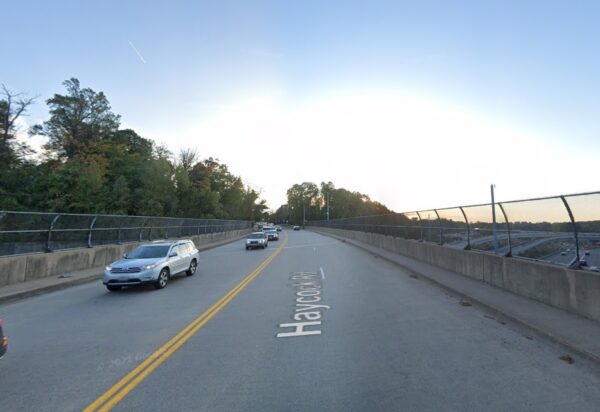
A proposed shared-use path on Haycock Road over I-66 is among several pedestrian and bicycle projects in the West Falls Church Metro station area that the McLean Citizens Association believes Fairfax County should prioritize for funding.
The organization, which routinely weighs in on issues affecting the greater McLean area, approved a resolution on Wednesday (Jan. 4) endorsing 19 projects recommended by an advisory group that the county convened to study the West Falls Church Transit Station Area’s (TSA) active transportation infrastructure.
“We believe these projects will improve access to the West Falls Church Metro station and area schools, and will likely be cost effective,” Glenn Harris, who chairs the association’s transportation committee, said.
Released in November, the advisory group’s final report backed community complaints that the area is congested and unsafe to travel for those not in cars, proposing 20 projects that could help address those issues in anticipation of future development.
In its resolution, the MCA board of directors highlighted seven pedestrian projects that it says deserve “rapid identification and allocation of funding for placement” on the county’s Transportation Priorities Plan:
- Pathway improvements along Haycock Road from Great Falls Street to the Metro Access Road
- A sidewalk along Redd Road to Idylwood Road and related improvements, including a crosswalk, to provide safe access to Lemon Road Elementary School
- A pedestrian refuge on Idylwood Road near Lemon Road Elementary
- High-visibility crosswalks at the Pimmit Drive and Leesburg Pike intersection
- A mid-block crossing on Haycock Road near Casemont Drive with flashing beacons
- Pedestrian improvements at the Westmoreland Street and Haycock Road intersection
- A crosswalk on Great Falls Street at Moly Drive
The Haycock pathway improvements would consist of a new shared-use path that’s at least 8 feet wide. To make room where it passes over I-66, the road could be reduced from two southwest travel lanes to one, according to MCA board member Bruce Jones.
“The pedestrian walkways along the bridge are woefully deficient and dangerous, in our opinion,” Harris said. “But as I understand it, there’s some consideration to narrow the lanes on the bridge to allow for a wider pedestrian infrastructure without the need to actually rebuild the bridge.”
Though estimated to be one of the more expensive proposals in the report, the project is one of two that MCA has advocated for in the past, along with the Redd Road sidewalk.
While the board gave its support to all four proposed bicycle projects, it didn’t endorse one pedestrian project that would add a pathway from Idylwood Road to the Metro station through or along the railyard.
According to Harris, county staff told the advisory group that the project could cost over $10 million, and the Washington Metropolitan Area Transit Authority had “expressed considerable concern” about the path as a potential security risk for its railyard.
“Given the limited amount of funds that are currently allocated, we don’t think that it makes sense to be funding this particular project, particularly when WMATA has expressed concerns, if not outright opposition to the project,” Harris said. “The available funds should be used for the other projects.”
Launched in late 2021, the West Falls Church Active Transportation Study served as a follow-up to the Fairfax County Board of Supervisors’ approval of a plan allowing more mixed-use development around the Metro station.
The West Falls development in Falls Church City is under construction. Plans for over 1.8 million square feet of development on the Metro station property and Virginia Tech’s nearby Northern Virginia Center are being reviewed by county staff.
The Board of Supervisors accepted the study report on Dec. 6 and directed staff to incorporate its recommendations into the county’s active transportation plan.
Image via Google Maps
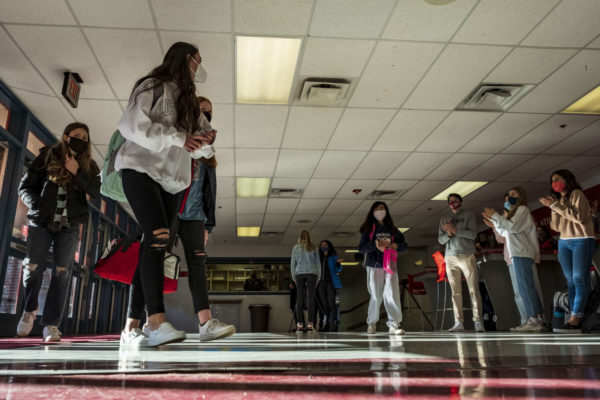
(Updated at 6:25 p.m. on 11/6/2022) Fairfax County Public Schools might be underestimating future overcrowding in the Tysons area, a new report from the McLean Citizens Association (MCA) says.
FCPS typically forecasts enrollment over the next five years in its annual Capital Improvement Program (CIP). A breakdown of that report alongside analysis of the county’s proffers — developer contributions required to offset the impact of new projects on local infrastructure — suggests higher future population counts in the Tysons area than what FCPS is predicting.
Jim Beggs, chairman of MCA’s Education and Youth Committee, presented the findings at a meeting of the MCA on Wednesday (Nov. 2), starting at the 23:53 mark.
“FCPS staff does projections every year for five years,” Beggs said. “Their projections focused on trends in migration in and out of the county, transfers within our area, and birth rate trends in our area.”
FCPS develops its own density projections to estimate what is going to happen in the schools, but Beggs said the specifics of development around Tysons might get lost in the mix as staff analyzes density countywide.
Part of the county’s proffer analysis includes estimates of a development’s impact on public schools, and Beggs said those numbers don’t always line up with the school system’s projections.
“The Tysons Corner area, we think, is a different animal,” Beggs said. “There’s a tremendous amount of development going on, and we think this analysis should be supplemented by a look at what is going on and how is the development activity looking like it’s going to impact our schools. If we look at that projection, how does it compare to the FCPS staff CIP projection?”
Beggs said comparing the two reports showed seven schools where the impact in the proffers is significantly higher than what FCPS is predicting:
Spring Hill Elementary School
- FCPS projection: 101% capacity in five years
- Proffers data: 136-147% capacity
- Disparity between the two reports: 35-46%
Marshall High School
- FCPS projection: 92% capacity in five years, if the modular units at the school are included
- Proffers data: 109-115% capacity
- Disparity: 17-23%
Kilmer Middle School
- FCPS projection: 89% capacity in five years with modular units included
- Proffers data: 110-116% capacity
- Disparity: 21-27%
Westbriar Elementary School
- FCPS projection: 83% capacity in five years
- Proffers data: 109-134% capacity
- Disparity: 26-51%
Westgate Elementary School
- FCPS projection: 85% capacity in five years
- Proffers data: 134-148% capacity
- Disparity: 50-64%
McLean High School
- FCPS projection: 105% capacity in five years
- Proffers data: 123-124% capacity
- Disparity: 17-19%
Longfellow Middle School
- FCPS projection: 92% capacity in five years
- Proffers data: 108-111% capacity
- Disparity: 16-19%
Beggs said those figures from the proffers data backs up existing concerns in the community about overcrowding in McLean High School.
All of these schools are impacted by new residential development on going in the Tysons area, Beggs said, adding that he mostly wants FCPS to just double check the math on the student population projections for the area.
“I’m saying, ‘We’d like you to take a look at these four or five schools that are heading to trouble,” Beggs said. “You’re looking at 198 [schools]. We’re asking you to focus on four or five in our area. In general, capacity issues can be solved by border adjustments, capital renovation, or putting a modular in. At the end of the day, we’re recommending staff go back and take a second look.”
Elaine Tholen, who represents the Dranesville District, including McLean, on the Fairfax County School Board says she has seen MCA’s report and has scheduled a meeting with FCPS staff to review the data.
“As always, I appreciate the work of MCA,” she said.
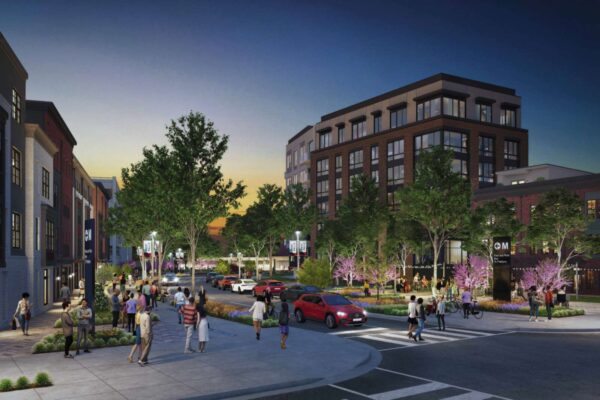
If the proliferation of major developments planned around the West Falls Church Metro station is making your head spin, an upcoming community meeting may provide some clarity.
The developers seeking to redevelop the Metro station property and expand Virginia Tech’s nearby Northern Virginia Center campus will present their proposals and answer questions at an informational meeting on Tuesday, Nov. 15.
Sponsored by Dranesville District Supervisor John Foust’s office and the McLean Citizens Association, the event will take place at Longfellow Middle School in McLean. It will start at 7 p.m. with an open house, where attendees can look at informational boards and talk directly to the developers.
The main meeting will last from 7:30-9 p.m. and include presentations on both projects, an overview of Fairfax County’s zoning review process, and a Q&A period.
“Participants will have the opportunity to provide feedback and ask questions and remote participants will be able to submit written questions or comments during the meeting,” Foust’s office said in a community notice, noting that a Zoom link for those who want to follow virtually will be provided a week before the meeting.
The Fairfax County Board of Supervisors opened the door for mixed-use development in the West Falls Church Transit Station Area (TSA) with an amendment to the county’s comprehensive plan in July 2021.
Applications for the Metro station redevelopment and Virginia Tech expansion were submitted for county review in March and September, respectively:
The FCGP-Metro Development (RZ-2022-DR-00006) application by EYA, Hoffman and Associates, and Rushmark Properties proposes to rezone the 24-acre West Falls Church Metrorail Station (7040 Haycock Rd, Falls Church) to the Planned Residential Mixed Use zoning district. The proposed development would include up to 810 multifamily units, 90 townhomes, and a 110,000 square feet office building with up to 10,000 square feet of ground floor retail.
The Converge West Falls (RZ-2022-DR-00018) application by HITT Contracting and Rushmark Properties proposes to rezone the 7.5-acre Northern Virginia Center (7054 Haycock Rd, Falls Church) to the Planned Residential Mixed-Use zoning district. The two-block mixed-use project consists of three buildings totaling 820,000 square feet of development and includes a six-floor office building that would serve as HITT Contracting’s corporate headquarters, a 440-unit residential building, and a 2,000 square foot one-story retail kiosk. The office building would include the approximately 40,000-square foot National Center for Smart Construction laboratory space to support Virginia Tech university’s mission as an academic and research institution.
The prospect of approximately 1.8 million square feet of new development — plus the separate West Falls project that’s already under construction in Falls Church City — has some in the community worrying that navigating the area by car and foot or bicycle could become untenable.
In the hopes of finding solutions, the county has been studying the TSA’s pedestrian and bicycle network. The most recent community meetings on the study were held Oct. 26 and 27, and an advisory group met for a seventh time on Wednesday (Nov. 2).
Metro is also accepting public comments until next Thursday (Nov. 10) on its proposal to overhaul the West Falls Church station’s parking lots, which will be partly replaced by the FCGP-Metro development.

